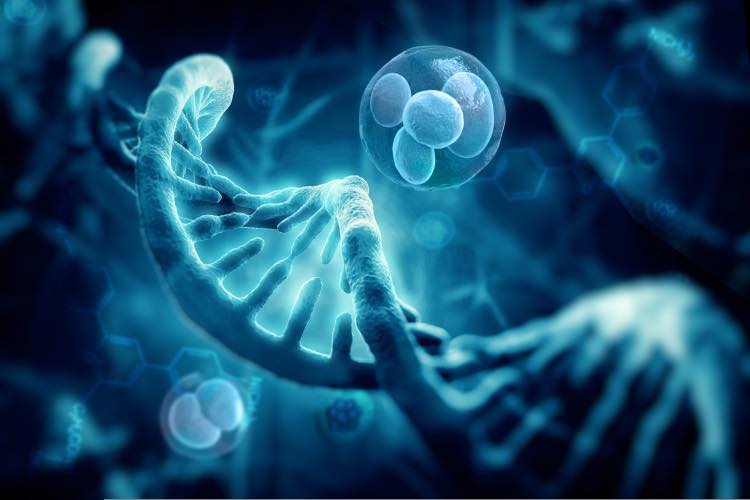バイオテクノロジーとジェノム編集について、日本語と英語で詳しく説明します。
バイオテクノロジー(Biotechnology)
1. バイオテクノロジーの定義(Definition of Biotechnology)
- 日本語: バイオテクノロジーは、生物学的プロセスや生物の機能を利用して、医療、農業、産業などの分野で新しい製品や技術を開発する学問および技術です。
- 英語: Biotechnology is the study and application of biological processes and organisms to develop new products and technologies in fields such as medicine, agriculture, and industry.
2. バイオテクノロジーの主な応用(Main Applications of Biotechnology)
- 日本語:
- 「医療バイオテクノロジー」: 新しい治療法や薬の開発。例:遺伝子治療、バイオ医薬品。
- 「農業バイオテクノロジー」: 作物の改良や病害虫に強い植物の育成。例:遺伝子組み換え作物。
- 「産業バイオテクノロジー」: 環境に優しい製品やプロセスの開発。例:バイオ燃料、生分解性プラスチック。
- 英語:
- “Medical Biotechnology”: Development of new treatments and drugs. Example: gene therapy, biotech pharmaceuticals.
- “Agricultural Biotechnology”: Improving crops and developing pest-resistant plants. Example: genetically modified crops.
- “Industrial Biotechnology”: Development of environmentally friendly products and processes. Example: biofuels, biodegradable plastics.
3. バイオテクノロジーの技術(Biotechnology Techniques)
- 日本語:
- 「細胞培養」: 細胞を体外で育てる技術。医薬品の製造や研究に利用される。
- 「ポリメラーゼ連鎖反応(PCR)」: DNAの特定の部分を増幅する技術。遺伝子分析や診断に使用される。
- 「クローニング」: 生物の遺伝情報を用いて、同一の生物を作り出す技術。
- 英語:
- “Cell Culture”: The technique of growing cells outside of the body. Used in pharmaceutical production and research.
- “Polymerase Chain Reaction (PCR)”: A technique for amplifying specific segments of DNA. Used in genetic analysis and diagnostics.
- “Cloning”: The technique of creating an identical copy of an organism using its genetic information.
ジェノム編集(Genome Editing)
1. ジェノム編集の定義(Definition of Genome Editing)
- 日本語: ジェノム編集は、生物のDNAを正確に修正する技術で、特定の遺伝子を追加、削除、または修正することができます。代表的な技術としてCRISPR-Cas9があります。
- 英語: Genome editing is a technique for making precise modifications to an organism’s DNA, allowing for the addition, deletion, or alteration of specific genes. A prominent technology is CRISPR-Cas9.
2. ジェノム編集の技術(Genome Editing Techniques)
- 日本語:
- 「CRISPR-Cas9」: DNAを切断し、遺伝子を編集する技術。簡便で高精度な編集が可能。
- 「TALENs」: 特定のDNA配列をターゲットにして切断する技術。CRISPRと同様に遺伝子編集に使用される。
- 「Zinc Finger Nucleases (ZFNs)」: DNAの特定の部位を切断するための技術。遺伝子の編集に利用される。
- 英語:
- “CRISPR-Cas9”: A technology for cutting DNA and editing genes. It allows for simple and precise modifications.
- “TALENs”: A technology for targeting and cutting specific DNA sequences. Used similarly to CRISPR for gene editing.
- “Zinc Finger Nucleases (ZFNs)”: A technology for cutting specific DNA sites. Used in gene editing.
3. ジェノム編集の応用(Applications of Genome Editing)
- 日本語:
- 「医療」: 遺伝性疾患の治療や新しい治療法の開発。例:遺伝子治療による病気の治療。
- 「農業」: 作物の品質向上や病害耐性の強化。例:病気に強い作物の開発。
- 「研究」: 生物学的研究のための遺伝子機能の解析。例:遺伝子の役割を調べるためのモデル生物の作成。
- 英語:
- “Medicine”: Treatment of genetic disorders and development of new therapies. Example: gene therapy for disease treatment.
- “Agriculture”: Improvement of crop quality and enhancement of disease resistance. Example: development of disease-resistant crops.
- “Research”: Analysis of gene functions for biological research. Example: creation of model organisms to study gene roles.
4. ジェノム編集の倫理と規制(Ethics and Regulation of Genome Editing)
- 日本語:
- 「倫理的問題」: 人間の遺伝子編集に対する倫理的な懸念。例えば、遺伝的改変が次世代に与える影響や、社会的不平等の懸念。
- 「規制」: ジェノム編集技術の利用に関する法律やガイドライン。研究や治療での安全性と倫理を確保するための取り組み。
- 英語:
- “Ethical Issues”: Ethical concerns regarding human genome editing. For example, potential impacts on future generations and social inequality.
- “Regulation”: Laws and guidelines regarding the use of genome editing technologies. Efforts to ensure safety and ethics in research and treatment.
バイオテクノロジーとジェノム編集は、医学、農業、産業などの分野で革命をもたらす可能性がありますが、それに伴う倫理的・社会的な課題にも対処する必要があります。技術の進展とともに、これらの技術がどのように発展し、どのように利用されるかが注目されます。
バイオテクノロジーとジェノム編集についてさらに学ぼう!
バイオテクノロジーとジェノム編集についてさらに詳しく見ていきましょう。
バイオテクノロジー(Biotechnology)の詳細
1. バイオテクノロジーの進展(Advances in Biotechnology)
- 日本語:
- 「合成生物学(Synthetic Biology)」: 生物の設計と構築を行う新しい分野で、自然界には存在しない機能を持つ生物を作り出すことができます。例:人工的な酵素の設計。
- 「個別化医療(Personalized Medicine)」: 個々の患者の遺伝情報に基づいて最適な治療法を提供するアプローチ。治療の精度と効果を高めることができます。
- 「オミクス技術(Omics Technologies)」: 遺伝子(ゲノム)、タンパク質(プロテオーム)、代謝物(メタボローム)などの大規模データを用いた研究手法。例:ゲノム編集やトランスクリプトーム解析。
- 英語:
- “Synthetic Biology”: A new field involving the design and construction of organisms with functions not found in nature. Example: designing artificial enzymes.
- “Personalized Medicine”: An approach to provide optimal treatments based on individual genetic information. It enhances the precision and effectiveness of treatments.
- “Omics Technologies”: Research methods using large-scale data related to genes (genomics), proteins (proteomics), and metabolites (metabolomics). Example: genome editing and transcriptome analysis.
2. バイオテクノロジーの医療応用(Medical Applications of Biotechnology)
- 日本語:
- 「バイオ医薬品(Biopharmaceuticals)」: 生物由来の医薬品で、抗体治療やホルモン療法などがあります。例:インスリンや抗がん剤。
- 「再生医療(Regenerative Medicine)」: 損傷した組織や臓器の再生を目指す医療。例:幹細胞治療や組織工学。
- 「予防医療(Preventive Medicine)」: バイオテクノロジーを用いた病気の予防や早期発見。例:遺伝子診断によるリスク評価。
- 英語:
- “Biopharmaceuticals”: Medications derived from biological sources, including antibody therapies and hormone treatments. Example: insulin and cancer drugs.
- “Regenerative Medicine”: Medical approaches aimed at regenerating damaged tissues or organs. Example: stem cell therapy and tissue engineering.
- “Preventive Medicine”: Using biotechnology for disease prevention and early detection. Example: genetic diagnostics for risk assessment.
ジェノム編集(Genome Editing)の詳細
1. ジェノム編集の技術(Genome Editing Technologies)
- 日本語:
- 「CRISPR-Cas9」: 特定のDNA配列をターゲットにして切断し、遺伝子の修正や挿入を行う技術。高い精度と柔軟性があります。
- 「TALENs(Transcription Activator-Like Effector Nucleases)」: タンパク質とDNAの相互作用を利用して特定の遺伝子を切断する技術。CRISPRと並ぶ有力な編集ツールです。
- 「ZFNs(Zinc Finger Nucleases)」: ゼンクフィンガーというDNA結合ドメインを用いて、特定の遺伝子をターゲットにした切断を行う技術。
- 英語:
- “CRISPR-Cas9”: A technology that targets specific DNA sequences for cutting, allowing for gene modification or insertion. It offers high precision and flexibility.
- “TALENs (Transcription Activator-Like Effector Nucleases)”: A technology that uses protein-DNA interactions to cut specific genes. It is a powerful tool alongside CRISPR.
- “ZFNs (Zinc Finger Nucleases)”: A technology that uses zinc finger DNA-binding domains to target and cut specific genes.
2. ジェノム編集の利点と限界(Advantages and Limitations of Genome Editing)
- 日本語:
- 「利点」:
- 「高精度な編集」: DNAの特定の位置を正確に編集できるため、目的の遺伝子改変が容易です。
- 「応用の広さ」: 医療、農業、研究など様々な分野で利用可能です。
- 「コスト削減」: 編集技術が進化することで、研究や治療のコストが低下する可能性があります。
- 「限界」:
- 「オフターゲット効果」: 目的以外のDNAも切断されるリスクがあります。
- 「倫理的問題」: 人間の遺伝子編集に関する倫理的な議論が続いています。
- 「技術的課題」: 編集精度や効率に関する技術的な制約があります。
- 「利点」:
- 英語:
- “Advantages”:
- “High Precision”: Allows for accurate editing of specific DNA locations, making targeted gene modifications easier.
- “Broad Applications”: Usable in various fields such as medicine, agriculture, and research.
- “Cost Reduction”: Advances in editing technology may reduce the costs of research and treatment.
- “Limitations”:
- “Off-Target Effects”: Risk of unintended DNA cuts outside the target site.
- “Ethical Issues”: Ongoing ethical discussions regarding human genome editing.
- “Technical Challenges”: Technical limitations related to editing precision and efficiency.
- “Advantages”:
3. ジェノム編集の未来(Future of Genome Editing)
- 日本語:
- 「治療の革新」: 遺伝子編集による新しい治療法が開発され、遺伝性疾患の治療が可能になるでしょう。
- 「農業の進化」: 作物の改良が進み、より耐病性が高く、栄養価の高い作物の開発が期待されます。
- 「エコシステムへの影響」: ジェノム編集技術が生態系に与える影響を評価し、慎重に使用する必要があります。
- 英語:
- “Medical Innovations”: New treatments developed through genome editing may enable the treatment of genetic disorders.
- “Agricultural Evolution”: Advances in crop modification are expected, leading to the development of disease-resistant and nutritionally enhanced crops.
- “Impact on Ecosystems”: Evaluation of the impact of genome editing technologies on ecosystems and their careful use will be necessary.
これらの情報を通じて、バイオテクノロジーとジェノム編集がどのように進化し、社会や産業に影響を与えるかについての理解を深めることができます。これらの技術は、科学と医療の最前線で重要な役割を果たしており、今後の展望が非常に楽しみです。
バイオテクノロジーとジェノム編集の歴史
バイオテクノロジーとジェノム編集の歴史について、日本語と英語で詳しく説明します。
バイオテクノロジーの歴史(History of Biotechnology)
1. 初期の発展(Early Developments)
- 日本語:
- 「古代の発酵技術(Ancient Fermentation Techniques)」: 酒やパンの発酵に利用される微生物の技術が古代から使用されていました。
- 「19世紀の発展(19th Century Developments)」: ルイ・パスツールの研究により、発酵や細菌学の基礎が築かれ、バイオテクノロジーの基礎が確立されました。
- 英語:
- “Ancient Fermentation Techniques”: Techniques involving microorganisms for fermentation of alcohol and bread have been used since ancient times.
- “19th Century Developments”: Louis Pasteur’s research laid the groundwork for fermentation and microbiology, establishing the foundation of biotechnology.
2. 近代バイオテクノロジーの始まり(Modern Biotechnology Emergence)
- 日本語:
- 「1950年代(1950s)」: DNAの二重螺旋構造がフランシス・クリックとジェームズ・ワトソンによって発見され、分子生物学の進展がバイオテクノロジーの発展を促進しました。
- 「1970年代(1970s)」: 遺伝子組み換え技術が開発され、最初の遺伝子組み換えバクテリアが作られました。また、インスリンなどのバイオ医薬品の商業生産が始まりました。
- 英語:
- “1950s”: The discovery of the double-helix structure of DNA by Francis Crick and James Watson advanced molecular biology and promoted the development of biotechnology.
- “1970s”: The development of genetic recombination technology led to the creation of the first genetically modified bacteria. Commercial production of biotech pharmaceuticals, such as insulin, began.
3. バイオテクノロジーの発展と応用(Advancements and Applications)
- 日本語:
- 「1980年代(1980s)」: PCR(ポリメラーゼ連鎖反応)が開発され、遺伝子の増幅と解析が容易になりました。これにより、遺伝子診断や法医学の分野での応用が進みました。
- 「2000年代(2000s)」: ヒトゲノムプロジェクトの完了により、全遺伝情報の解読が行われ、個別化医療や新薬の開発が加速しました。
- 英語:
- “1980s”: The development of PCR (Polymerase Chain Reaction) made gene amplification and analysis easier, advancing applications in genetic diagnostics and forensic science.
- “2000s”: The completion of the Human Genome Project enabled the decoding of the entire genetic information, accelerating the development of personalized medicine and new drugs.
ジェノム編集の歴史(History of Genome Editing)
1. 初期の技術(Early Technologies)
- 日本語:
- 「1980年代(1980s)」: ZFNs(Zinc Finger Nucleases)が開発され、特定のDNA配列をターゲットにして切断する技術が登場しました。
- 「1990年代(1990s)」: タンパク質-DNA相互作用を利用するTALENs(Transcription Activator-Like Effector Nucleases)が開発されました。
- 英語:
- “1980s”: ZFNs (Zinc Finger Nucleases) were developed, introducing a technology for targeting and cutting specific DNA sequences.
- “1990s”: TALENs (Transcription Activator-Like Effector Nucleases) were developed, utilizing protein-DNA interactions to cut DNA.
2. CRISPR-Cas9の登場(Introduction of CRISPR-Cas9)
- 日本語:
- 「2012年(2012)」: CRISPR-Cas9技術がJennifer DoudnaとEmmanuelle Charpentierによって発表され、遺伝子編集の革命が起こりました。CRISPR-Cas9は高い精度と使いやすさから、瞬く間に広まりました。
- 「2010年代(2010s)」: CRISPR-Cas9技術の進展により、医療研究、農業、基本的な科学研究において広く応用されるようになりました。
- 英語:
- “2012”: The CRISPR-Cas9 technology was introduced by Jennifer Doudna and Emmanuelle Charpentier, revolutionizing gene editing with its high precision and ease of use.
- “2010s”: Advances in CRISPR-Cas9 technology led to its widespread application in medical research, agriculture, and fundamental scientific studies.
3. 現代のジェノム編集と未来(Contemporary Genome Editing and Future Directions)
- 日本語:
- 「現在(Present)」: ジェノム編集技術は、医療、農業、バイオテクノロジーの研究で革新的な成果を上げています。特に、遺伝子治療や病気予防における利用が進んでいます。
- 「未来(Future)」: ジェノム編集技術は、さらなる精度向上や新しい応用領域の開発が期待されています。倫理的な議論と規制の整備も進むでしょう。
- 英語:
- “Present”: Genome editing technologies are achieving innovative results in medicine, agriculture, and biotechnology research. Particularly, applications in gene therapy and disease prevention are advancing.
- “Future”: Future expectations include further improvements in precision and the development of new application areas for genome editing technologies. Ethical discussions and regulatory frameworks are also expected to evolve.
バイオテクノロジーとジェノム編集の歴史は、科学技術の進歩とともに急速に進化してきました。これらの技術は、医学、農業、産業などの分野で重要な影響を与え続けており、今後の発展が期待されます。







バイオテクノロジーとジェノム編集